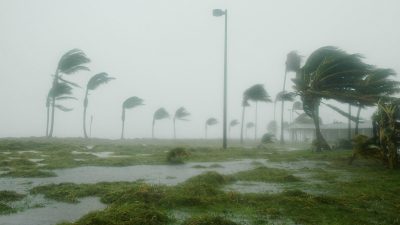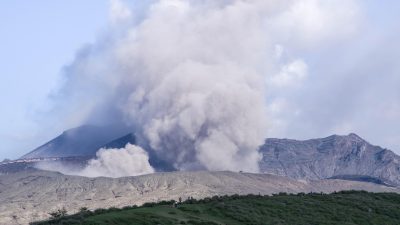The Storm That Devastated Nations
Typhoon Haiyan, also referred to as Super Typhoon Yolanda, was one of the strongest and most catastrophic storms ever recorded. Striking the Philippines, Vietnam, and China in November 2013, it left behind a trail of unimaginable destruction. With wind speeds surpassing 195 mph (315 km/h) and storm surges reaching over 6 metres (20 feet), entire communities were wiped out. The storm’s devastation was not just physical but also humanitarian, affecting millions and causing widespread displacement, hunger, and economic collapse.
Governments, humanitarian organisations, and survivors continue to grapple with the storm’s aftershocks years later. But what made Typhoon Haiyan so deadly? Why was the disaster response so inadequate? And how did the affected countries rebuild after the devastation? This blog will explore the full impact of Typhoon Haiyan, exposing the horrifying realities of the storm while shedding light on controversial failures and overlooked consequences.
1. A Storm Like No Other: How Haiyan Became a Monster
Typhoon Haiyan was no ordinary storm—it was one of the most intense tropical cyclones ever recorded. Developing as a tropical depression on 2 November 2013, it swiftly strengthened into a super typhoon by 6 November, fuelled by warm Pacific waters and near-perfect atmospheric conditions.
By the time it made landfall in the Philippines on 8 November, Haiyan had already reached Category 5 intensity, with wind gusts exceeding 235 mph (380 km/h). This made it one of the strongest landfalling tropical cyclones in recorded history. The typhoon did not weaken significantly as it tore through Leyte, Samar, and Cebu, instead intensifying the storm surge that swept coastal cities away.
The storm maintained its strength as it moved toward Vietnam and China, although it weakened slightly before its final landfall. However, its impact remained catastrophic, causing severe flooding and structural destruction even as far as southern China.
2. A Wall of Water: The Deadliest Aspect of Haiyan
While the extreme winds caused massive destruction, it was the storm surge that led to the highest number of casualties. Haiyan’s powerful winds pushed enormous amounts of seawater onto land, creating waves as high as 7 metres (23 feet) in some areas.
In Tacloban, Philippines, the water levels rose so rapidly that thousands of residents were swept away before they could escape. Entire villages were submerged within minutes. The Philippine government was unprepared for the scale of the surge, leading to a higher death toll than expected.
The storm surge also devastated coastal regions of Vietnam and China, destroying fishing villages and leaving thousands homeless. Experts later compared Haiyan’s storm surge to a tsunami, given its height and destructive force.
3. Counting the Dead: Haiyan’s Shocking Human Cost
- Total Death Toll: Over 6,300 people officially reported dead in the Philippines, with thousands more missing. In Vietnam, at least 14 people lost their lives, and in China, 6 fatalities were recorded.
- Injuries: More than 28,000 people were injured across affected regions, many suffering from broken bones, head trauma, and severe infections due to exposure to floodwaters.
- Displacement: Over 4.1 million people were left homeless in the Philippines alone. Many lived in evacuation centres for months, with poor sanitation and inadequate medical support.
- Economic Losses: The total cost of damages reached approximately $14 billion, making it one of the costliest typhoons in history.
- Destroyed Homes and Infrastructure: An estimated 1.1 million houses were either severely damaged or completely destroyed, along with thousands of schools, hospitals, and roads.
4. A Nation Left Defenceless: The Failure of Disaster Response
The devastation caused by Typhoon Haiyan was made worse by the Philippine government’s lack of preparation and slow response. Despite early warnings from meteorologists, many local authorities underestimated the storm’s intensity. The failure to adequately evacuate vulnerable communities resulted in thousands of preventable deaths.
Before Haiyan struck, officials had issued storm alerts and advised evacuations, but in many areas, people were simply told to seek shelter. With no clear evacuation protocols or storm surge awareness, residents in places like Tacloban and Leyte took refuge in weak structures rather than heading to higher ground. Tragically, even designated evacuation centres—such as schools and government buildings—were not strong enough to withstand the storm surge.
In the immediate aftermath, the government struggled to coordinate relief efforts. Roads were blocked by debris, communication lines were destroyed, and local officials were overwhelmed or missing. Survivors were left without food, clean water, or medical aid for days, leading to outbreaks of disease and increasing the death toll.
While Vietnam and China fared slightly better in terms of disaster response, thousands in coastal villages were still left stranded, with slow emergency efforts delaying assistance to flood-hit areas.
5. Desperation and Chaos: A Humanitarian Crisis Unfolds
With relief efforts delayed, survivors were forced into a desperate struggle for survival. Within days, starvation and dehydration set in, pushing people to loot supermarkets, raid storage warehouses, and even fight for supplies.
In Tacloban, bodies lined the streets as overwhelmed authorities struggled to collect the dead. The air was filled with the stench of rotting corpses, making the city nearly uninhabitable. Many survivors built makeshift shelters from debris, while others sought refuge in destroyed churches and government buildings.
International aid was slow to arrive due to logistical challenges. Airports and seaports were damaged or flooded, making it difficult for rescue teams to enter the worst-hit regions. The lack of medical facilities meant that the injured were left untreated, and some died from infections and lack of proper care.
For weeks, many areas remained cut off from the rest of the world, relying on whatever food or water they could scavenge. The humanitarian crisis exposed severe weaknesses in disaster management, leading to widespread criticism of the Philippine government’s response.
6. The Global Response: Billions Pledged, But Where Did It Go?
As the scale of the disaster became clear, the international community rushed to provide aid. Governments, charities, and humanitarian organisations pledged billions of dollars in relief efforts, yet much of the funding was mismanaged, delayed, or never reached the victims.
The United Nations (UN) launched an appeal for $791 million, while countries such as the United States, Japan, and the UK provided military support, food, and medical aid. The Red Cross, World Food Programme, and UNICEF played major roles in assisting survivors.
However, controversies soon emerged regarding where the money was actually going. Survivors reported receiving little to no aid, and accusations of corruption, political interference, and bureaucratic inefficiencies surfaced. Some foreign aid was blocked due to mismanagement, while other donations were reportedly stolen or mishandled.
Years later, questions remain: Why did billions of dollars fail to reach the survivors? Who was responsible for the delays? The response to Haiyan remains one of the most controversial disaster relief efforts in recent history.
7. Economic Devastation: A Blow That Took Years to Recover From
- Philippines’ GDP Impact: The country suffered an estimated $14 billion in damages, with key industries such as agriculture, fishing, and tourism heavily affected.
- Loss of Livelihoods: Over 5 million people lost their jobs, as farms were flooded, fishing boats destroyed, and businesses flattened.
- Vietnam and China’s Economic Toll: In Vietnam, agricultural losses amounted to millions of dollars, while China faced extensive flooding and infrastructure damage, forcing thousands to relocate.
- Infrastructure Collapse: Roads, bridges, hospitals, and schools were reduced to rubble, requiring massive rebuilding efforts that lasted for years.
- Long-Term Impact on Communities: Many survivors never fully recovered, with thousands still living in temporary shelters years after the disaster.
8. Long-Term Rebuilding: Has Haiyan’s Lesson Been Learned?
The Philippines, Vietnam, and China embarked on ambitious rebuilding efforts in the aftermath of the storm. However, the process was slow, plagued by corruption, and often insufficient.
The Philippine government promised resilient housing for survivors, yet years later, thousands were still living in makeshift homes or evacuation centres. Rebuilding efforts focused on restoring key infrastructure, but many rural communities remained neglected, forcing families to fend for themselves.
In Vietnam and China, government-led rebuilding efforts were more structured, with stronger coastal defences and better disaster preparedness plans put in place. However, the economic and psychological scars of Haiyan remain deeply embedded in affected communities.
The biggest question remains: Has the world truly learned from Haiyan, or will we see history repeat itself in future typhoons?
9. Climate Change and Future Storms: A Warning We Cannot Ignore
Typhoon Haiyan was not just a natural disaster—it was a warning. Scientists have linked its unprecedented strength to climate change, pointing to rising ocean temperatures as a key factor in the storm’s intensity.
Global warming is causing typhoons, cyclones, and hurricanes to become stronger, more unpredictable, and deadlier. Without significant efforts to reduce carbon emissions and invest in better disaster preparedness, future storms could be even more catastrophic.
Haiyan proved that many countries are not ready for extreme weather events. Governments must take urgent action to protect vulnerable populations before the next super typhoon strikes.
10. The Forgotten Survivors: Are They Still Suffering Today?
More than a decade later, the scars of Typhoon Haiyan remain. While some areas have been rebuilt, many survivors still struggle with poverty, trauma, and loss.
International attention faded long ago, but for the people of Tacloban, Leyte, and other devastated regions, the effects of Haiyan are still very real. Families continue to mourn lost loved ones, and for many, the future remains uncertain.
Did the world truly do enough to help Haiyan’s victims? Or have they been forgotten, like so many others before them?
FAQs
1. How strong was Typhoon Haiyan?
Haiyan reached Category 5 intensity, with wind speeds of 195 mph (315 km/h) and gusts exceeding 235 mph (380 km/h), making it one of the most powerful storms ever recorded.
2. How many people died because of Haiyan?
The official death toll was over 6,300 in the Philippines alone, with thousands more missing. Vietnam and China also reported fatalities, though at a lower scale.
3. Why was the storm surge so deadly?
Haiyan’s storm surge reached over 7 metres (23 feet) in some areas, flooding coastal cities and sweeping away thousands of people who had nowhere to escape.
4. Did the Philippines recover from Haiyan?
While major cities have been rebuilt, many survivors are still struggling. Poor disaster management and corruption slowed recovery, leaving thousands in permanent displacement.
5. Could another storm like Haiyan happen again?
Yes, and it could be even stronger. Climate change is increasing the intensity of tropical cyclones, making storms like Haiyan more frequent and more dangerous.




